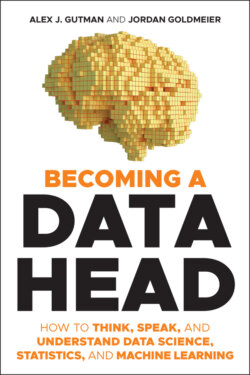Читать книгу Becoming a Data Head - Alex J. Gutman - Страница 35
Why Is This Problem Important?
ОглавлениеThe first fundamental question is, “Why is this problem important?” It seems simple but it's one that's often overlooked. We get caught up in the hype of how we're going to solve the problem—and what we think it can do—before the project even starts. At the end of this chapter, we'll talk about the true underlying effects of not answering this question. But at a minimum, this question sets the expectations for why a project should be undertaken. This is important as data projects take time and attention—and often additional investments in technology and data. Simply identifying the importance of the problem before starting it will help optimize how company resources are best used.
You can ask the question in different ways:
What keeps you (us) up at night?
Why does this matter?
Is this a new problem, or has it been solved already?
What is the size of the prize? (What's the return on investment?)
You'll want to understand how each person sees the problem. This will help you create alignment on how everyone will end up supporting the project to solve the problem—and if they agree it should start.
During these initial discussions, you'll want to keep the focus on the central business problem and pay close attention if you hear rumblings of recent technology trends. Talk of technical trends can quickly derail the meeting away from its business focus. Be on the lookout for two warning signs:
Methodology focus: In this trope, companies simply think trying some new analysis method or technology will set them apart. You've heard this marketing fluff before: “If you're not using Artificial Intelligence (AI), you're already behind … .” Or, companies find some other buzzword they would like to incorporate (e.g., “sentiment analysis”).
Deliverable focus: Some projects go off track because companies focus too much on what the deliverable will be. They say the project needs to have an interactive dashboard, for example. You start the project, but the outcome becomes about the installation of the new dashboard or business intelligence system. Project teams need to take a step back and trace how what they want to build brings value to the organization.
It may come as a surprise—or a relief—that both warnings involve technology and how it should not be included when defining the problem. To be clear, at some point in the project, methodologies and deliverables enter the picture. To start, however, the problem should be in direct, clear language everyone can understand. Which is why we recommend you scrap the technical terminology and marketing rhetoric. Start with the problem to be solved, not the technology to be used.
Why does this matter? We've noticed project teams have a mix of people who are enamored by data or intimidated by it. Once the problem definition conversation steers toward analysis methods or technology, two things happen. First, anyone intimidated by data might freeze up and stop contributing to the discussion—defining the business problem. Second, those enamored by data quickly splinter the problem into technical subproblems that may or may not align to an actual business objective. Once the business problem morphs into data science subproblems, it may be weeks or months before failure is discovered. No one will want to revisit the main problem once the project work starts.
Fundamentally, teams must answer “Is this a real business problem that is worth solving, or are we doing data science for its own sake?” This is a good, albeit blunt, question to ask, especially now during the hype and confusion around data science and related fields.
